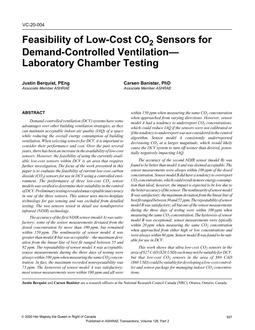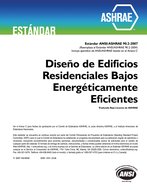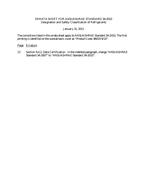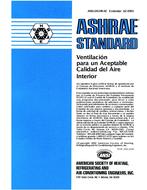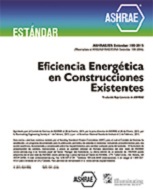Description
Demand-controlled ventilation (DCV) systems have some advantages over other building ventilation strategies, as they can maintain acceptable indoor air quality (IAQ) of a space while reducing the overall energy consumption of building ventilation. When selecting sensors for DCV, it is important to consider their performance and cost. Over the past several years, there has been an increase in the availability of low-cost sensors. However, the feasibility of using the currently available low-cost sensors within DCV is an area that requires further investigation. The focus of the work presented in this paper is to evaluate the feasibility of current low-cost carbon dioxide (CO2) sensors for use in DCV using a controlled environment. The performance of three low-cost CO2 sensor models was verified to determine their suitability in the control of DCV. Preliminary testing revealed unacceptable inaccuracy in one of the three sensors. This sensor uses micro-hotplate technology for gas sensing and was excluded from detailed testing. The two sensors tested in detail use nondispersive infrared (NDIR) technology.
The accuracy of the first NDIR sensor (model A) was satisfactory; some of the sensor measurements deviated from the dosed concentration by more than 100 ppm, but remained within 150 ppm. The nonlinearity of sensor model A was greater than model B but was acceptable—the maximum deviation from the linear line of best fit ranged between 55 and 92 ppm. The repeatability of sensor model A was acceptable; sensor measurements during the three days of testing were always within 100 ppm when measuring the same CO2 concentration.In fact, the maximum recorded nonrepeatability was 73 ppm. The hysteresis of sensor model A was satisfactory; most sensor measurements were within 100 ppm and all were within 150 ppm when measuring the same CO2 concentration when approached from varying directions. However, sensor model A had a tendency to underreport CO2 concentrations, which could reduce IAQ if the sensors were not calibrated orif the tendency to underreport was not considered in the controlalgorithm. Sensor model A consistently underreported decreasing CO2 at a larger magnitude, which would likely cause the DCV system to turn off sooner than desired, potentially negatively impacting IAQ.
The accuracy of the second NDIR sensor (model B) wasfound to be better than model A and was deemed acceptable. The sensor measurements were always within 100 ppm of the dosed concentration. Sensor model B did have a tendency to overreportCO2 concentrations, which could result in more energy consumptionthan ideal; however, the impact is expected to be low due to the better accuracy of the sensor. The nonlinearity of sensor model B was satisfactory; the maximum deviation from the linear line of best fit ranged between 30 and 55 ppm. The repeatability of sensor model B was satisfactory; all but one of the sensor measurementsduring the three days of testing were within 100 ppm when measuring the same CO2 concentration. The hysteresis of sensor model B was exceptional; sensor measurements were typically within 20 ppm when measuring the same CO2 concentration when approached from either high or low concentrations and were always within 60 ppm. Sensor model B was found to be suitable for use in DCV.
This work shows that ultra low-cost CO2 sensors in the area of $27 CAD ($20 USD) each may not be suitable for DCV, but that low-cost CO2 sensors in the area of $80 CAD ($60 USD) could be suitable for developing a low-cost controller and sensor package for managing indoor CO2 concentrations.
Citation: 2020 Virtual Conference Technical Papers
Product Details
- Published:
- 2020
- Number of Pages:
- 15
- Units of Measure:
- Dual
- File Size:
- 1 file , 1.9 MB
- Product Code(s):
- D-VC-20-004
